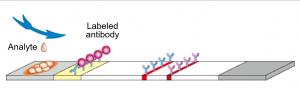In March of 1982, Samsung Chairman Lee Byungchul was shocked to see Hewlett-Packard’s office in Silicon Valley, California.
‘Is this really an office?’ he asked.
The staff in the office had no papers, pens or pencils on their desks. They were doing almost everything with just a computer; calculating, planning, and reporting, which made working efficient. At that time, Chairman Lee felt in his bones that the semiconductor industry would emerge as a core industry faster than expected. As soon as Lee returned to Korea, he acquired Korea Semiconductor, Korea’s first semiconductor company, and invested a huge amount of its budget on production lines. However, many people were concerned over Lee’s decision. At that time, there was no high-tech industrial infrastructure in Korea, and even government officials were afraid of a Samsung bankruptcy if they failed to develop chips. Intel, which was the corporation leading the semiconductor market, sarcastically criticized Lee for his investment as a “megalomania patient.” Despite these challenges, Samsung succeeded in developing the 64K DRAM[1]. It was the third company in the world to develop 64K DRAM that year, after companies from the United States and Japan. In the 1980s, Samsung developed various memory chips[2] for the first time in the world using its own technology. In 1992 it became the world’s No.1 company in memory chip sales, just 10 years after they started developing them. Today, Korean companies have become bigger, so Samsung and SK Hynix ranked first and second in sales with 42.1% and 29.5% of the global DRAM market respectively, based on sales in the fourth quarter of last year. Sales may increase because it is expected that a ‘semiconductor super-cycle’, which is a super booming period, will come back to these industries. (Like in the mid-2000s when the demand for PCs soared, in the early 2010’s when smartphones became commonly used, and in 2018 when technologies related to the 4th industrial revolution gained attention.) Particularly, the semiconductor super-cycle is clearly showing signs in the memory chip market, which is dominated by domestic companies like Samsung and SK Hynix. There are many reasons why experts are anticipating a super-cycle.
The first reason is the increasing sales of IT devices that require a lot of DRAMs such as smartphones, PCs, and game consoles. Sales of PCs and Tablets soared as non face-to-face education and telecommuting increased due to COVID-19. This year the global smartphone market, which had been shrinking for three years in a row between 2018 and 2020, is promising because of the expansion of the 5G market. The another reason is game consoles with a lot of DRAMs such as Sony’s Playstation 5 and Microsoft’s Xbox X, which were released last year, are gaining huge popularity. Also, large cloud companies such as Amazon, Google, and Microsoft are expected to purchase their new system semiconductors this year. The introduction of DDR5, a next generation DRAM that is twice as fast as the existing ones, is likely to replace older chips on a large scale, which is also pointing to the prediction that demand will increase.
These predictions are also shown in figures.

This graph shows DRAM Exchange Index (DXI) figures compiled by DRAMeXchange, a memory semiconductor market research institute. DXI is a DRAM price index that experts use as a standard when judging the memory chip industry and has a strong correlation with the value of DRAM manufacturers. The DXI fell significantly last year and hit the bottom at 16,898 points in August and then rose sharply again. Even exceeding the DXI of the 2018 super-cycle, today’s DXI has hit an all-time high, and now all the attention is focused on how long the super-cycle will be this year, and how big the sales for Samsung and SK Hynix will be.
But as there are two sides to every coin, there are some problems appearing. Just as a supply shortage was the biggest factor that caused the price of memory chips to rise, other semiconductors are also facing major difficulties in supply. The shortage of semiconductors for automobiles has become a reality since the beginning of this year. This supply shortage has been intensified as some production lines stopped due to a variety of disasters. An electrical power outage caused by the strongest cold wave in the southern U.S. forced factories of automobile chip companies such as NXP and Infineon in Austin, Texas to shut down for more than a week. In March, the shortage situation got worse after a fire broke out in Renesas, the world’s second largest manufacturer of automobile semiconductor chips, located in Japan. Moreover, Taiwan chip producer TSMC is suffering from the worst drought in 56 years. The Taiwanese government is reducing the supply of agricultural and industrial water to prevent the depletion of reservoirs, causing a setback in the production at TSMC. To make matters worse, on March 31st, a fire broke out at TSMC’s 12th plant in the Shinju Science Complex and the operation was suspended.
As demand for cars was expected to drop sharply due to COVID-19 last year, a reduction of automobile chip orders by the automotive industry also became a problem. According to China’s Economic Week, the global auto market shrank 13% last year. Unexpectedly, starting from October to December last year, with massive support from the Chinese government, orders of new cars began to rise, leading to a shortage of automobile chip inventories. As a result, global automakers such as Toyota, Honda and GM announced a series of production cuts. Consulting firm Alex Partners estimated that profits from the auto industry would plunge by $60.6 billion this year because of the failure to meet demand forecasts.
From a short-term perspective, it can be a chance for semiconductor producing companies to benefit greatly from a semiconductor super-cycle. However, the delay of semiconductor supply has affected other industries, and will eventually lead to inconveniences for consumers. Customers will have to buy products at a higher price than before due to the astronomical increase in raw material prices. This can lead to a ‘new normal’ formation which might cause shrinking consumption across industries, leading to a decrease in demand in the overall market. We will have to wait and see how the companies solve the problem of supply and demand of semiconductors for now. It will be interesting to see how they will prepare for the future throughout this incident.
[1] Semiconductors can be divided into memory semiconductors and system semiconductors depending on their use. Memory semiconductors store information and system semiconductors process information. DRAM is a volatile memory which is one of the memory semiconductors.
[2] 64M DRAM, 256M DRAM, 1G DRAM, 128MD SDRAM, 128MB Flash memories, etc.
Chung Yeongyu ygchung00@naver.com
<저작권자 © 홍익대영자신문사, 무단 전재 및 재배포 금지>





